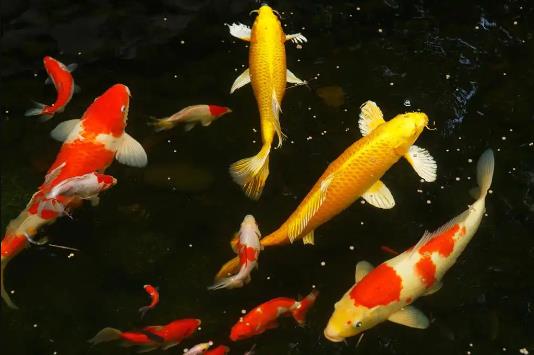The treatment methods for koi fish saprolegniasis mainly include drug treatment, ecological treatment, and adjuvant treatment.

Drug Treatment
Potassium Permanganate: Potassium permanganate is one of the commonly used drugs for treating koi fish saprolegniasis. It has strong oxidizing properties and can kill some fungi and bacteria. The specific operation is to soak the diseased fish in a potassium permanganate aqueous solution with a concentration of two parts per million for about half an hour. Pay attention to controlling the concentration to avoid harming the fish.
Saltwater: Put the diseased fish into a 1.5% - 2.5% saltwater solution and rinse it for 5 - 10 minutes. After rinsing, you can apply mercurochrome to promote wound healing. In addition, an appropriate amount of salt can be added to the fish tank to prevent saprolegniasis, but be careful to control the amount of salt used.
Malachite Green: Although malachite green was once a commonly used drug, it is quite toxic, so its use requires caution. You can wipe the diseased fish with a malachite green aqueous solution with a concentration of 0.1% - 1%.
Methylene Blue Solution and Oxytetracycline: Soak the diseased fish in an oxytetracycline solution for about 15 minutes, and then pour the methylene blue solution into the fish tank in proportion for disinfection. Raise the water temperature to 30°C and add salt to help the koi fish recover.
Salicylic Acid, Glutaraldehyde, and Povidone - Iodine: These drugs can be sprayed throughout the pond to inhibit the growth and reproduction of saprolegnia. For example, use 1 - 1.5 grams of salicylic acid per cubic meter of water, or 20 - 40 milligrams of glutaraldehyde, or a povidone - iodine solution containing 0.3 - 0.5 grams of available iodine per cubic meter of water.
Ecological Treatment
Raise the Water Temperature: Raise the water temperature above 25°C to inhibit the growth and reproduction of saprolegnia. Note that the temperature should be increased slowly to avoid causing stress to the fish due to rapid water temperature changes.
Adjust the Water Quality: Change the water regularly to keep the water clean and fresh. Use water quality improvers such as zeolite powder and activated carbon to improve the water quality environment.
Add Beneficial Microorganisms: Add beneficial microorganism preparations such as Bacillus subtilis and photosynthetic bacteria to the water body. These can decompose the organic matter in the water, reduce the content of harmful substances, and inhibit the growth of harmful bacteria.
Adjuvant Treatment
Wound Treatment: For fish with obvious saprolegnia lesions on their body surface, carefully remove the mycelium with tweezers or scissors. Then disinfect with an iodine - containing disinfectant or potassium permanganate solution, and apply antibacterial ointment such as erythromycin ointment to prevent wound infection and promote healing.
Strengthen Nutrition: Feed the fish with nutritious and easily digestible feed, and add immune enhancers such as vitamin C and vitamin E to enhance the fish's physical condition and immunity, helping it recover as soon as possible.
